About this detail of the Tiger
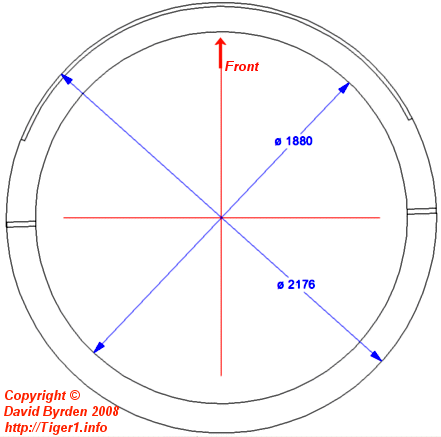
The Tiger's turret was supported by a flat steel ring, welded to the inside base of the turret. This ring was made of two parts. The diagram above shows the size of the assembled ring.
The weld lines between the parts are drawn at left and right. In the second type of turret there were bolt holes at the midline, so the welds were offset slightly as you can see here.
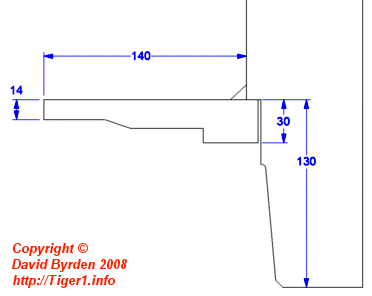
This profile shows how the ring was welded to the inside base of the turret wall. The ring tapers from 30mm at the outside to 14mm at the inside edge, to fit the equipment attached underneath it.
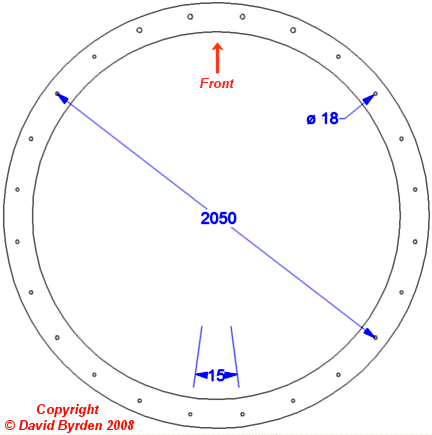
The ball-bearing race was attached to the underside of this ring by bolts spaced evenly around it. They passed through smooth holes in the ring. (There were other holes in the ring, for example to attach the gun counterbalance; they are not drawn here.)
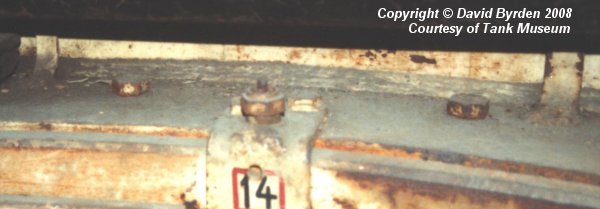
This photo of the Bovington vehicle [2] shows two of the bolt heads.
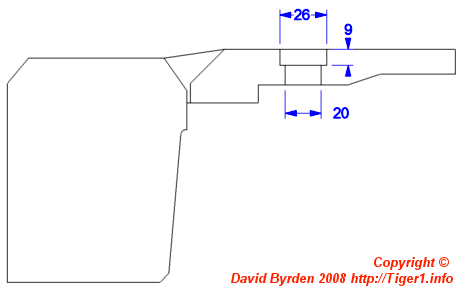
At the front of the turret the ring was welded to the chin armour, which was 5mm lower. The four holes in the front of the ring did not carry bolts with protruding heads; instead they had large screws, sitting flush inside the ring. This was to avoid fouling the gun mantlet. This profile shows the ring, the chin armour and a screw hole.
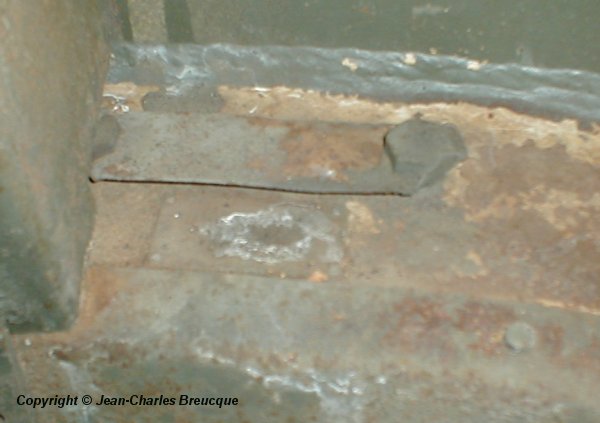
All bolts on the Tiger had metal tabs to prevent them working loose. In this case, because of the impact sleeves, the tabs sat 10mm above the surface. They were flat rectangular strips of metal, 40mm by 175mm, looped over each pair of bolts with their corners bent upwards. The photo shows a museum vehicle built in April 1944 (the green paint is not original).
[1] DW to Tiger 1
[2] Survey of Tiger 250122, at Bovington museum, by David Byrden